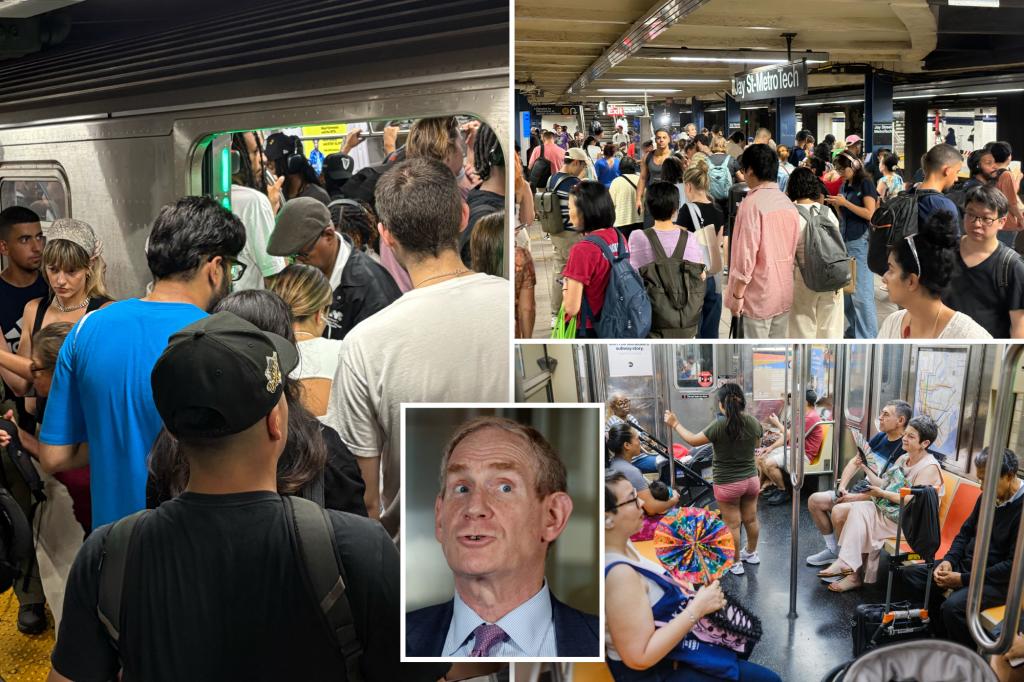New York City’s subway system, a lifeline for millions, faced a tumultuous summer, leaving straphangers frustrated and questioning the Metropolitan Transportation Authority’s (MTA) leadership. While MTA Chairman Janno Lieber insists it was ‘one of the best’ summers, data reveals a starkly different reality. The summer of 2025 saw the worst service since the infamous ‘summer of hell’ in 2018, marked by massive delays and major incidents. This article delves into the conflicting narratives, examining the data, commuter experiences, and the implications for the future of NYC’s transit.
The condition of the subway is highly important because it is an indispensable part of New York City, a city that simply wouldn’t be able to work without the subway. The reliability of the subway is extremely important to New Yorkers.
We’ll explore:
- The conflicting data on subway performance.
- Commuter experiences and dissatisfaction.
- The MTA’s response and future plans.
A Summer of Subway Delays and Data Discrepancies
Data from June, July, and August revealed a total of 194 major incidents, defined as events causing delays to 50 or more trains. This surpasses the 192 incidents of the previous year and marks the highest number since the 217 incidents of 2018. While August saw a decrease in incidents, the overall summer performance painted a concerning picture of declining service reliability.
Data from this June, July and August shows 194 major incidents — defined as snafus that delay 50 or more trains.
Lieber, however, presented a more optimistic view, stating, ‘But if you count August, ladies and gentlemen, this has been one of the best summers in MTA history.’ This statement clashes with the experiences of many riders and raises questions about the MTA’s transparency.
Commuters Voice Frustration with Subway Service
The disconnect between the MTA’s assessment and the reality faced by commuters is palpable. Straphangers shared stories of being trapped on trains without air conditioning during heatwaves, experiencing significant delays, and overcrowding. The proposed fare hike further fueled their discontent, with many arguing that the current level of service doesn’t justify an increase.
Michelle Sanchez, 25, who lives in the Bronx, said her hellish experience on the subway during a July heatwave alone justifies not raising the fare.
She was trapped with her 4-year-old son for 40 minutes underground in a 6 train that had no air conditioning.
“The train sucks,” she said.
Bernal Middleton, a frequent subway rider, echoed this sentiment, stating, ‘They are full of s–t. They wanna raise the fare, but they don’t improve the service.’
MTA Defends Performance, Cites Satisfaction Surveys
In response to criticism, an MTA spokesperson pointed to customer satisfaction surveys showing an increase from 47% in spring 2024 to 57% this spring. However, these numbers fail to address the immediate concerns of riders who faced a summer of disruptions. Lieber defended the MTA’s performance by highlighting the affordability of subway travel compared to owning a car, a statement many found dismissive of their struggles.
He tried to persuade people that the subway was still much cheaper overall than owning a car and operating it in the city, as a reason not to be so harsh. However, to many this feels like dodging their responsibilities.
The Future of NYC Transit: Fare Hikes and Congestion Pricing
The debate over subway service comes at a crucial time for NYC transit, with a proposed fare hike and the implementation of congestion pricing on the horizon. Congestion pricing, in particular, is predicted to generate additional funds for the MTA, and supporters say that with the extra funds, the subways will receive much-needed improvements.
These changes could significantly impact commuters and the city’s economy. Experts say if the subways don’t improve and congestion pricing comes into place, some people may choose not to enter the city.
The Economic and Social Consequences of Subway Delays
Subway delays have far-reaching consequences, affecting not only individual commuters but also the city’s economy. Lost productivity, missed appointments, and increased stress levels are just some of the tangible effects. A reliable transit system is vital for economic growth and social equity, ensuring that all New Yorkers have access to jobs, education, and opportunities.
When the subways aren’t working on time, workers are late, customers can’t get to stores, and overall the city loses money. If the subways continue to fail, this will affect the overall financial situation of New York City.
Holding the MTA Accountable for Improved Service
The summer of 2025 serves as a wake-up call for the MTA, emphasizing the need for greater accountability and transparency. Riders are demanding tangible improvements in service reliability, communication, and overall customer experience. It is crucial for the MTA to prioritize these concerns and implement effective strategies to address the systemic issues plaguing the subway system.
The MTA has to come up with a viable plan, and more than that, they need to execute it and make sure that things get better for the people of New York.
Conclusion: A Crossroads for NYC’s Subway System
The NYC subway system stands at a crossroads. The conflicting narratives between the MTA’s leadership and the experiences of riders highlight a critical need for transparency and accountability. While data and surveys provide valuable insights, the true measure of success lies in the daily experiences of commuters. It’s up to the MTA to ensure that the New York City subway continues to be the best transportation option in the city.
As the city moves forward with fare hikes and congestion pricing, it is essential to prioritize improvements in service reliability and customer satisfaction. Investing in infrastructure upgrades, enhancing communication, and addressing the root causes of delays will be crucial steps in restoring confidence in the subway system.
Ultimately, the future of NYC transit depends on the MTA’s ability to listen to the concerns of riders, embrace innovation, and deliver a transit system that meets the needs of a dynamic and thriving city.

Leave a Reply